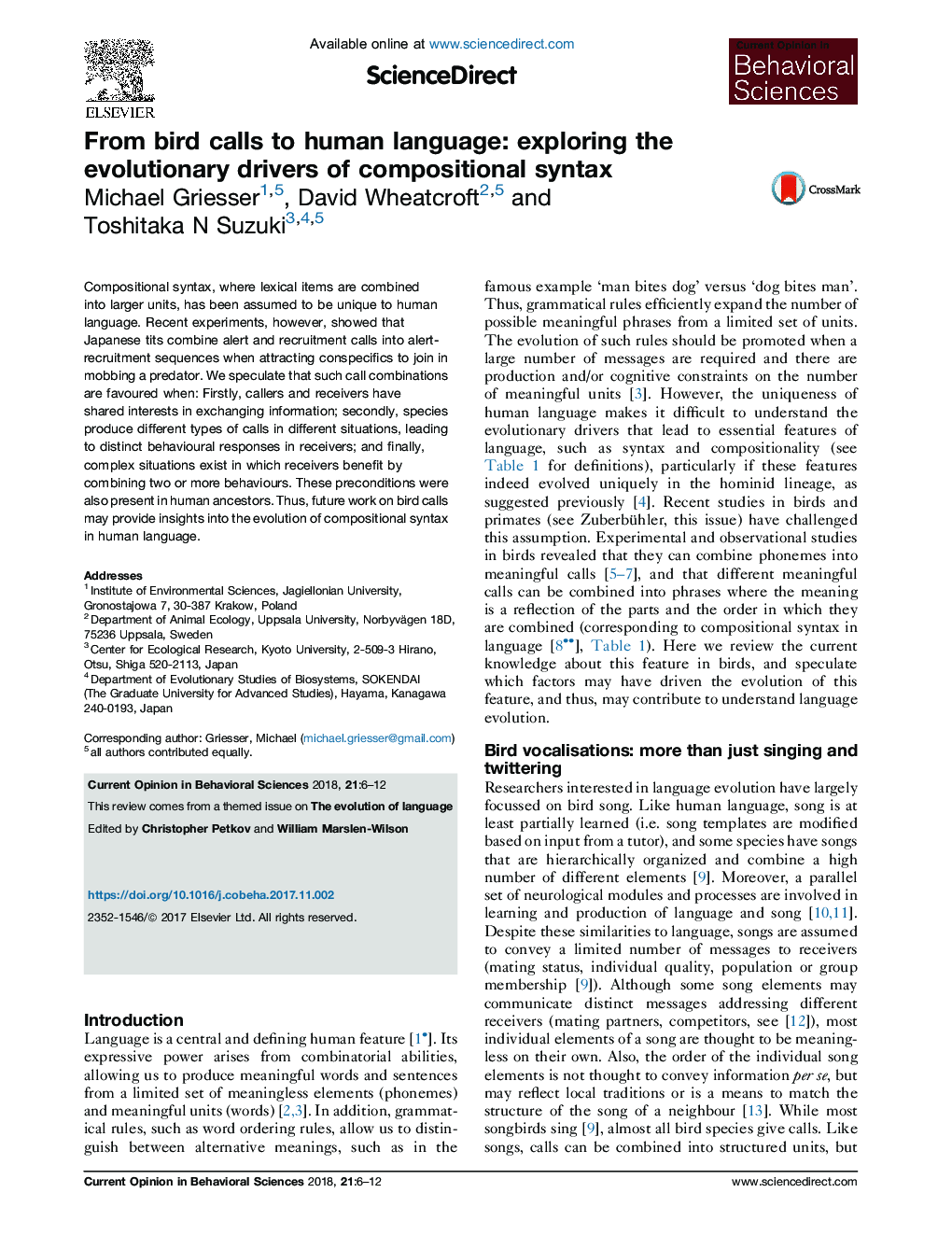| Article ID | Journal | Published Year | Pages | File Type |
|---|---|---|---|---|
| 8838120 | Current Opinion in Behavioral Sciences | 2018 | 7 Pages |
Abstract
Compositional syntax, where lexical items are combined into larger units, has been assumed to be unique to human language. Recent experiments, however, showed that Japanese tits combine alert and recruitment calls into alert-recruitment sequences when attracting conspecifics to join in mobbing a predator. We speculate that such call combinations are favoured when: Firstly, callers and receivers have shared interests in exchanging information; secondly, species produce different types of calls in different situations, leading to distinct behavioural responses in receivers; and finally, complex situations exist in which receivers benefit by combining two or more behaviours. These preconditions were also present in human ancestors. Thus, future work on bird calls may provide insights into the evolution of compositional syntax in human language.
Related Topics
Life Sciences
Neuroscience
Behavioral Neuroscience
Authors
Michael Griesser, David Wheatcroft, Toshitaka N Suzuki,
